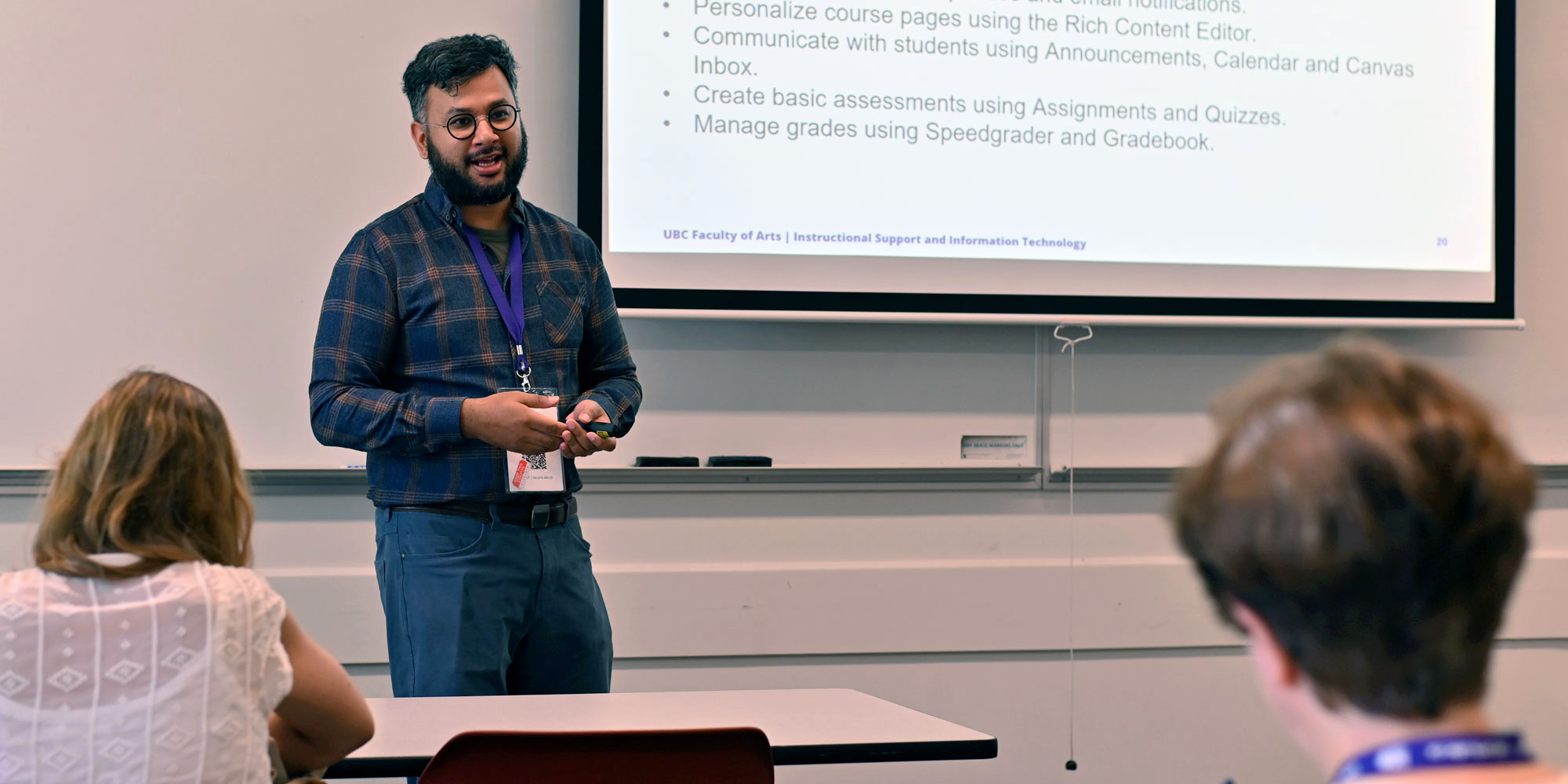

— Dr. Nisha Malhotra, Instructor in Vancouver School of Economics
Back Story
Dr. Nisha Malhotra is an instructor in the Vancouver School of Economics. She teaches a number of undergraduate courses in Economics including Introductory Microeconomics, International Trade, Population, Gender and Global Health. In her teaching, Dr. Malhotra actively integrates short tutorial videos to help students better understand challenging concepts and review them at their own pace. She developed the videos organically while teaching her courses, with the topics for the videos emerging from common student questions. Over time, Dr. Malhotra has developed a substantial collection of tutorial videos that have allowed her to change the way she teaches. The use of online videos to address student questions around challenging or frequently misunderstood concepts has freed up class time to allow for a deeper exploration of real life applications and problem solving.
More information about Dr. Malhotra’s teaching approaches can be found on her Teaching Methods and Flexible Learning blog.
Tell us about the course you teach. What are the most challenging aspects of teaching an introductory course?
I teach an introductory course, Microeconomics, in the Economics Department for the undergraduate program. Students are introduced to the fundamental concepts of Economic Theory, which is often their first view of what economics is all about. Because most of the students have had no previous coursework in economics, the aim is to familiarize them with a new language while teaching the economic concepts. Learning the language of economics is crucial to understanding the concepts.
What motivated you to make videos for your class?
I had been musing about the shortcomings of a lecture where a handful of students needed to be brought up to speed with the rest of the class. I wanted to be able to teach them without taking up the class time of the other students who had already mastered the concept. I had recently heard about screen capture software, which was easy to use to make short videos that explained the lecture content. The videos thus became tutorials for the students.
How did you decide on the topics for the videos?
Initially, I chose topics based on the number of questions that were asked in class and on the topics that students found difficult in previous years. Currently, I conduct online polls and ask the students directly. The students also give regular feedback during the semester. Some variations are always found in different classes/semesters in terms of what the students find most challenging. The key is to stay in touch with what students need.
What did you learn from the process and outcome of using videos?
I was uncertain if the students would really use the video tutorials. At first, I made a few videos and send them the link. I was surprised with the number of students that appreciated the effort. Also, based on YouTube analytics, I realized students were making considerable use of it. It was in 2009 winter semester that I realized the value of the video tutorials to help explain the more difficult concepts in the course.
One of the biggest benefits of using videos for review is the freeing up of lecture time. Consequently, we have used the time to apply economic concepts to real world cases. In particular, because we have more time in class, the active learning approach (such as in-class exercises) has really helped to engage the students.
You taught your first blended learning course last semester. How have you restructured the course or changed the curriculum?
Last semester, I made some really large changes. Since I had video resources for students to review the class material, we had more free time in class. In the extra time, we applied micro concepts to real world situations and discussed the relevant policies. Active learning was a big part of the course.
The course is very different now; each microeconomic concept has an application, which we cover in class with worksheets. We no longer talk only about a price ceiling or a price floor, but we also discuss minimum wage increases in BC and its implications, and the shortages caused by rent control in downtown Vancouver or New York City. Students now have time to analyze what is happening around the world using the economic concepts and tools learnt in class. It’s fantastic, and it wasn’t really possible before.
You have adapted a blended learning model but the course is different from a flipped classroom?
A flipped classroom is really a subcategory of blended learning. Actually, I have not flipped my course: the face-to-face interactions remain unchanged. Students are still required to come to all lectures, but in addition, they have access to video tutorials that they can watch at home. They still have assignments to do at home. I have tried to maintain the same workload for all students, so the video tutorials are purely for reviewing the material. We have swapped the material reviewing for problem solving in class. The amount of time that students would have spent problem solving at home is now used for reviewing material. All material is still taught in class, so the instructor does not save time during the semester. On the contrary, I spend extra time preparing worksheets for analyzing current news and policies. I also incorporate different teaching methods and media in my class, especially with the active learning component.
What is the benefit of your blended approach and how have the students responded?
The course material and exams seem to be more challenging. Students must apply their learning instead of just reproducing lessons. Even with more difficult material, the class averages have not changed from previous semesters, which suggests that the learning has improved.
The students are much more engaged in class, with more interactions, more questions, and surprisingly, a higher attendance. These benefits have all been reported for active learning. I believe I am also more in touch with what students need. With our greater communication, I can find out which topics they find challenging and which current news items are of interest.
The student responses (from the online survey) have also been positive. Out of 59 students that responded to the survey 84 percent found the blended course more useful than a traditional course, 16 percent found it to be no more or less useful, and 7 percent found it to be less useful. When asked how important were video tutorials and class exercises for helping you learn, most of the students found these features to be very helpful.
What challenges have you faced and what advice do you offer other instructors who are considering implementing this approach to their course?
Preparing and delivering the course in the same semester was time-consuming and taxing. Since I already had some videos, I thought I would be able to manage teaching two other courses while revamping the third. Nevertheless, I underestimated the task. It took a full semester to put all of the exercise material together, create the website, make additional videos, and encourage the students to bring current news items and cases for discussion.
I would advise instructors to carefully evaluate their semester workload. For a first attempt, I would recommend that instructors consider the preparation work to be equivalent to an extra course workload. Another option would be to work towards a blended learning course by building resources over a few semesters.
It is also a good idea to inform your students on the first day (or even at the time of registration, if possible) about your plan and the reason for using a blended learning approach. Students are usually more receptive to active learning and class worksheets when they understand how it can help them and what is expected of them from the outset.


